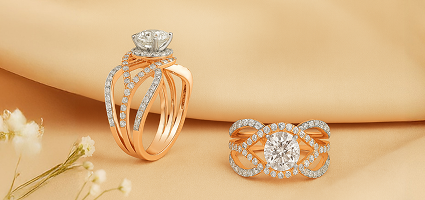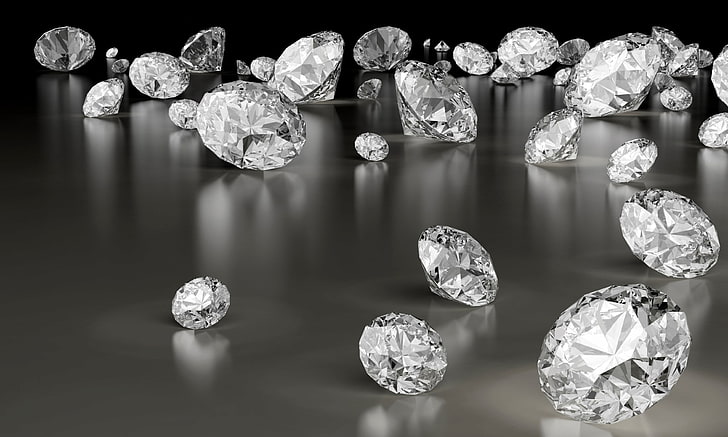Lab Grown Diamonds Kuala Lumpur: Why Malaysia’s Capital Is Becoming

lab grown diamonds Kuala Lumpur
I didn’t expect to fall down a rabbit hole of diamond culture in Kuala Lumpur, but travel has a funny way of nudging you into worlds you never planned on exploring. I was there for a food story, of all things, but after a local friend mentioned KL’s growing obsession with sustainable jewellery, curiosity got the better of me. You know how it is. One minute you’re hunting down laksa, the next you’re standing inside a cool, softly lit showroom, staring at a diamond grown in a lab.
And honestly, the whole thing caught me off guard. I’d heard of lab grown diamonds before, sure, but I’d always filed them away as a niche alternative for eco-minded couples or bargain hunters. What I didn’t realise is just how quickly they’ve become part of mainstream jewellery culture in KL — and how much they’re reshaping the way Malaysians (and travellers like me) think about luxury.
Over the course of a week, I wandered between jewellers, chatted with young couples scoping out engagement rings, sat down with a rather poetic gemologist, and even tried on a few pieces myself. What I found was a city buzzing with energy around innovation, sustainability, and a surprisingly emotional conversation about value.
This is the story of lab grown diamonds in Kuala Lumpur — how they’re made, why they’re winning people over, and what their rise says about the future of jewellery across Asia.
The quiet shift happening in KL’s jewellery market
Kuala Lumpur isn’t the first city you’d expect to become a hotspot for consciously crafted diamonds, but maybe that’s exactly why it’s happening. There’s a sense of openness here, a willingness to try new things if they feel smart and forward-looking. And the younger crowd in KL is especially tuned into transparency. They want to know where things come from, whether the supply chain is clean, and what they’re actually paying for.
When I asked a jeweller in Bukit Bintang why interest had surged, she laughed and said, “People here are practical. If you can get something just as beautiful, but at a better price and with less guilt attached, why wouldn’t you?”
I suppose she’s right. The appeal of lab grown diamonds Kuala Lumpur shoppers are flocking toward isn’t mysterious. They’re real diamonds. They’re sparkly (ridiculously sparkly, to be honest). And they come without the murkiness that sometimes shadows mined stones.
But it goes a bit deeper than that. There’s a generational shift happening in Malaysia — one that mirrors trends in Australia, Singapore, and parts of Europe — where buying “better” is more important than buying “bigger.” People want meaning baked into their purchases. And a diamond made with clean tech ticks that box neatly.
A quick detour into the science
You might not know this, but lab created diamonds aren’t imitations. They’re not cubic zirconia or moissanite or any of those substitutes that sparkle like they’re trying too hard. They’re carbon atoms arranged in the exact same structure as mined diamonds.
The difference is the birthplace.
Instead of forming underground over gazillions of years, lab diamonds grow inside technological chambers where scientists recreate the extreme heat and pressure found deep in the Earth. It’s sort of wild. One gemologist described it to me as “accelerating geology,” and I’ve been unreasonably charmed by that phrase ever since.
Two methods are used: CVD (Chemical Vapour Deposition) and HPHT (High-Pressure High-Temperature). I won’t bore you by turning this into a science paper, but CVD is often praised for its precision, while HPHT can produce stones with exceptional brilliance. Both are legitimate. Both produce genuine diamonds. Which one a jeweller stocks depends on their suppliers.
The point is: lab grown diamonds are, in every meaningful way, the same thing we’ve been pulling from the ground for centuries. Their story is simply more modern.
Why travellers are buying diamonds in KL
Something that surprised me was just how many tourists are walking out of KL with a ring or pendant tucked into their luggage. I chatted with an Australian couple at a hotel café — they were in town for a short break and had just bought an engagement ring. “We weren’t planning on it,” the guy admitted, grinning in that shy, newly-engaged way. “But once we saw the price difference, it almost didn’t feel real.”
And that’s the other part of KL’s diamond moment: the value proposition.
Price matters, of course, and Malaysia tends to offer competitive pricing compared to many Western markets. But it’s more than that. The education element is strong. Jewellers here spend real time explaining the process, showing comparisons, guiding customers toward pieces that fit their values, not just their wallets.
If you’re curious, one of the better overviews I stumbled across was this simple breakdown on lab grown diamonds Kuala Lumpur options here. It’s written in that informative Malaysian-English tone I’ve grown to love — straightforward, friendly, and pretty much no fluff.
The environmental question
I don’t think anyone buys a diamond expecting it to be environmentally perfect. Mining anything has consequences. Manufacturing anything also has consequences. But when you compare the two processes side by side, lab grown diamonds tend to come out ahead.
They require far less land disruption, obviously. They also avoid the social complications tied to certain mining operations. And while energy usage is a valid conversation (some labs still rely heavily on electricity), many modern producers are shifting toward renewable power, which changes the equation significantly.
What struck me was how often sustainability came up in conversation. A group of uni students I met near KLCC told me they love the idea of lab diamonds because they “fit the future Malaysia is trying to build.” That phrasing stayed with me.
Jewellery is emotional, yes, but it’s also cultural. And in a busy, ambitious city like KL, the culture is leaning toward innovation that feels grounded, not superficial.
Are lab diamonds just a trend?
I wondered this too. Would all this excitement fade once the novelty wore off? After talking to enough jewellers, I’m fairly confident the answer is no. Lab grown diamonds aren’t a fad; they’re a shift. Think of how people moved from mass-produced fast fashion to ethical brands. Or how electric vehicles went from “that’s neat” to “that’s normal.” Or how Australians (myself included) developed a taste for oat milk almost by accident.
Once people see an option that’s smart, transparent, and well-priced, it’s hard to go back.
And there’s another factor: design freedom. Jewellers in KL told me that lab diamonds let them experiment with bolder, larger, more creative pieces because the material cost isn’t as prohibitive. One designer showed me a pendant that looked like a melting comet — very dramatic, very un-traditional — and said she never would’ve attempted it with a mined stone of that size. Too risky. Too expensive. Lab diamonds have made room for imagination.
A quick note on industrial uses (because it’s surprisingly interesting)
While I was researching, I stumbled across something I didn’t expect: lab diamonds aren’t just for jewellery. They’re used in tech, science, engineering, medicine, and all sorts of places that made me think, “Huh, I probably should’ve paid more attention in physics class.”
Things like heat conductors, high-precision cutting tools, laser systems — you name it. There’s a neat little explainer here on lab created diamonds and their industrial applications.
Reading it made me appreciate the scale of the diamond world beyond sparkling rings and red-carpet jewellery. It’s easy to forget these stones are extreme materials, not just luxury items.
What to look for if you’re buying in Kuala Lumpur
If you do find yourself in KL and feel tempted to bring home a sparkly souvenir, a few common-sense tips go a long way:
• Ask for certification. Reputable retailers provide grading reports from recognised labs.
• Compare stones side by side. Seeing is believing, especially when you’re new to lab diamonds.
• Don’t rush. Think of it as a fun cultural experience, not a task.
• And, honestly, trust your gut. Diamonds are emotional purchases. If a piece makes you smile, that’s usually the sign you’re looking for.
One thing I appreciated in KL was the general lack of pushiness. Most consultants I met were genuinely excited to educate customers, not sell to them. They’d happily pull out trays of stones, explain clarity quirks, or show you how colour differs under various lighting.
Leaving KL with a different view of luxury
By the time I wrapped up my trip, I’d tasted more bowls of noodles than I care to admit and learned far more about diamonds than I ever expected. But the bigger takeaway was this: luxury doesn’t have to be old-fashioned. It doesn’t have to cling to outdated ideas of rarity or status. It can evolve.
KL showed me a version of luxury that feels modern, thoughtful, and surprisingly grounded. A luxury where beauty isn’t diminished by transparency, and where technology and tradition can coexist without tension.
Whether you love diamonds, feel neutral about them, or simply enjoy learning about cultural shifts as you travel, the rise of lab grown diamonds in Kuala Lumpur is one of those quietly fascinating movements worth paying attention to.






